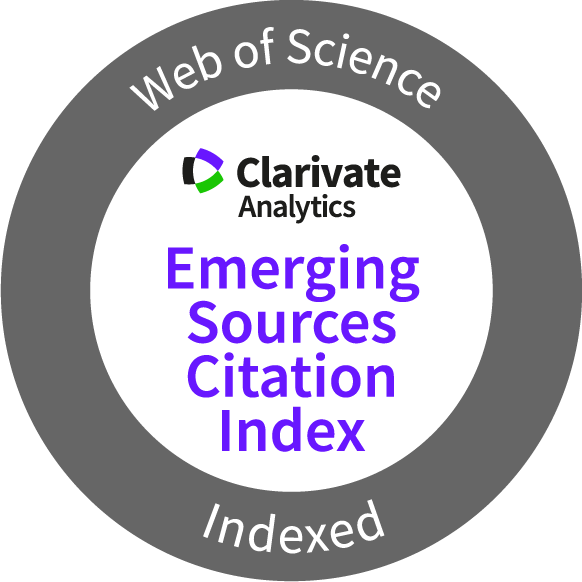Molecular Fish Species Identification of Commercial Traditional Seafood Products in the Malaysian Market
Keywords:
DNA barcoding, food safety, processed fish products, seafood mislabellingAbstract
Seafood is a vital source of protein, multivitamins, and essential fatty acids, particularly omega-3. However, seafood fraud is becoming a growing threat to food safety in Malaysia. This study reports on the molecular identification of fish species in various seafood products collected from different regions in Malaysia. DNA barcoding employing a ~500 bp fragment of the mitochondrial cytochrome c oxidase I (COI) gene was used to identify 46 samples. Successfully amplified and identified samples accounted for 48% of the analysed fish products. Sardinella species were most commonly used in traditional Malaysian products, especially in the east coast states. Interestingly, we found regional variations in fish species used for the same traditional products, highlighting the diversity of local preferences and resource availability. DNA barcoding with the COI marker was found to be effective for the rapid identification of fish species in processed foods, which could enhance food safety and consumer confidence. Although no toxic fish substitutions were detected, the results highlight the need for more comprehensive labelling practices in the Malaysian seafood market. This study emphasises the potential of molecular techniques in addressing food fraud concerns and improving seafood traceability.
Downloads
Metrics
References
Adibah, A.B., Syazwan, S., Hanim, M.H., Munir, M.B., Faraha, A.I. & Siti Azizah, M.N. 2020. Evaluation of DNA barcoding to facilitate the authentication of processed fish products in the seafood industry. LWT, Article 109585. DOI: https://doi.org/10.1016/j.lwt.2020.109585
Ali, F.S., Ismail, M. & Aly, W. 2020. DNA barcoding to characterize biodiversity of freshwater fishes of Egypt. Molecular Biology Reports, 47(8): 5865-5877. DOI: https://doi.org/10.1007/s11033-020-05657-3
Armani, A., Guardone, L., La Castellana, R., Gianfaldoni, D., Guidi, A. & Castigliego, L. 2015. DNA barcoding reveals commercial and health issues in ethnic seafood sold on the Italian market. Food Control, 55: 206-214. DOI: https://doi.org/10.1016/j.foodcont.2015.02.030
Bénard-Capelle, J., Guillonneau, V., Nouvian, C., Fournier, N., Le Loët, K. & Dettai, A. 2015. Fish mislabelling in France: Substitution rates and retail types. PeerJ, 2: Article e714. DOI: https://doi.org/10.7717/peerj.714
Bréchon, A.L., Hanner, R. & Mariani, S. 2016. A systematic analysis across North Atlantic countries unveils subtleties in cod product labelling. Marine Policy, 69: 124-133. DOI: https://doi.org/10.1016/j.marpol.2016.04.014
Chang, C.H., Lin, H.Y., Ren, Q., Lin, Y.S. & Shao, K.T. 2016. DNA barcode identification of fish products in Taiwan: Government-commissioned authentication cases. Food Control, 66: 38-43. DOI: https://doi.org/10.1016/j.foodcont.2016.01.034
Chin, T.C., Adibah, A.B., Zainal Abidin, D.H. & Siti Azizah, M.S. 2016. Detection of mislabelled seafood products in Malaysia by DNA barcoding: Improving transparency in food market. Food Control, 64: 247-256. DOI: https://doi.org/10.1016/j.foodcont.2015.11.042
Cohen, N.J., Deeds, J.R., Wong, E.S., Hanner, R.H., Yancy, H.F., White, K.D., Thompson, T.M., Wahl, M., Pham, T.D., Guichard, F.M., Huh, I., Austin, C., Dizikes, G. & Gerber, S.I. 2009. Public health response to puffer fish (tetrodotoxin) poisoning from mislabeled product. Journal of Food Protection, 72(4): 810-817. DOI: https://doi.org/10.4315/0362-028X-72.4.810
de Boer, H.J., Ichim, M.C. & Newmaster, S.G. 2015. DNA barcoding and pharmacovigilance of herbal medicines. Drug Safety, 38(7): 611-620. DOI: https://doi.org/10.1007/s40264-015-0306-8
Dhar, B., Chakraborty, M., Chakraborty, M., Malvika, S., Devi, N.N., Aloufi, A.A., Trivedi, S. & Ghosh, S.K. 2020. Molecular identification of reptiles from Tabuk region of Saudi Arabia through DNA barcoding: A case study. In: DNA Barcoding and Molecular Phylogeny. S. Trivedi, H. Rehman, S. Saggu, C. Panneerselvam and S. Ghosh (Eds.). Springer, Cham. pp. 253-264. DOI: https://doi.org/10.1007/978-3-030-50075-7_16
Di Pinto, A., Forte, V., Guastadisegni, M.C., Martino, C., Schena, F.P. & Tantillo, G. 2007. A comparison of DNA extraction methods for food analysis. Food Control, 18(1): 76-80. DOI: https://doi.org/10.1016/j.foodcont.2005.08.011
Food and Agriculture Organization of the United Nations. 2014. The state of world fisheries and aquaculture 2014. http://www.fao.org/3/i3720e/i3720e.pdf
Fricke, R., Eschmeyer, W.N. & Van der Laan, R. (Eds.). 2024. Eschmeyer's catalog of fishes: Genera, species, references. http://researcharchive.calacademy.org/research/ichthyology/catalog/fishcatmain.asp
Froese, R. & Pauly, D. (Eds.). 2023. FishBase. www.fishbase.org
Galal-Khallaf, A., Ardura, A., Mohammed-Geba, K., Borrell, Y.J. & Garcia-Vazquez, E. 2014. DNA barcoding reveals a high level of mislabeling in Egyptian fish fillets. Food Control, 46: 441-445. DOI: https://doi.org/10.1016/j.foodcont.2014.06.016
Hanner, R., Becker, S., Ivanova, N.V. & Steinke, D. 2011. FISH-BOL and seafood identification: Geographically dispersed case studies reveal systemic market substitution across Canada. Mitochondrial DNA, 22(sup1): 106-122. DOI: https://doi.org/10.3109/19401736.2011.588217
Harris, D.J., Rosado, D. & Xavier, R. 2016. DNA barcoding reveals extensive mislabeling in seafood sold in Portuguese supermarkets. Journal of Aquatic Food Product Technology, 25(8): 1375-1380. DOI: https://doi.org/10.1080/10498850.2015.1067267
Hebert, P.D.N., Cywinska, A., Ball, S.L. & DeWaard, J.R. 2003. Biological identifications through DNA barcodes. Proceedings of the Royal Society of London. Series B: Biological Sciences, 270(1512): 313-321. DOI: https://doi.org/10.1098/rspb.2002.2218
Hedayati, A. & Tarkhani, R. 2014. Hematological and gill histopathological changes in iridescent shark, Pangasius hypophthalmus (Sauvage, 1878) exposed to sublethal diazinon and deltamethrin concentrations. Fish Physiology and Biochemistry, 40(3): 715-720. DOI: https://doi.org/10.1007/s10695-013-9878-3
Huda, N. 2012. Malaysian fermented fish products. In: Handbook of Animal-Based Fermented Food and Beverage Technology. 2nd Ed. Y.H. Hui and E. Özgül Evranuz (Eds.). pp. 709-715.
Koroiva, R., Rodrigues, L.R.R. & Santana, D.J. 2020. DNA barcoding for identification of anuran species in the central region of South America. PeerJ, 8: Article e10189. DOI: https://doi.org/10.7717/peerj.10189
Kumar, S., Stecher, G. & Tamura, K. 2016. MEGA7: Molecular evolutionary genetics analysis version 7.0 for bigger datasets. Molecular Biology and Evolution, 33(7): 1870-1874. DOI: https://doi.org/10.1093/molbev/msw054
Liu, K., Zhao, S., Yu, Z., Zhou, Y., Yang, J., Zhao, R. & Tang, Y. 2020. Application of DNA barcoding in fish identification of supermarkets in Henan province, China: More and longer COI gene sequences were obtained by designing new primers. Food Research International, 136: Article 109516. DOI: https://doi.org/10.1016/j.foodres.2020.109516
Luo, A., Zhang, A., Ho, S.Y., Xu, W., Zhang, Y., Shi, W., Cameron, S.L. & Zhu, C. 2011. Potential efficacy of mitochondrial genes for animal DNA barcoding: A case study using eutherian mammals. BMC Genomics, 12(1): Article 84. DOI: https://doi.org/10.1186/1471-2164-12-84
Md-Zain, B.M., Abid-Kamal, S.N.A., Aifat, N.R., Abdul-Latiff, M.A.B., Mohd-Hashim, A.B.U., Ampeng, A., Yaakop, S. & Samat, A. 2018. Molecular identification of shark fins in Malaysian Borneo's local markets. Biodiversitas Journal of Biological Diversity, 19(3): 1035-1043. DOI: https://doi.org/10.13057/biodiv/d190336
Miller, L.M.S. & Cassady, D.L. 2015. The effects of nutrition knowledge on food label use. A review of the literature. Appetite, 92: 207-216. DOI: https://doi.org/10.1016/j.appet.2015.05.029
Nagalakshmi, K., Annam, P.K., Venkateshwarlu, G., Pathakota, G.B. & Lakra, W.S. 2016. Mislabeling in Indian seafood: An investigation using DNA barcoding. Food Control, 59: 196-200. DOI: https://doi.org/10.1016/j.foodcont.2015.05.018
Nagarajan, M., Nimisha, K. & Thomas, S. 2020. Molecular characterisation of ruminant mammals using DNA barcodes. In: DNA Barcoding and Molecular Phylogeny. S. Trivedi, H. Rehman, S. Saggu, C. Panneerselvam and S. Ghosh (Eds.). Springer, Cham. pp. 203-216. DOI: https://doi.org/10.1007/978-3-030-50075-7_13
Parveen, I., Gafner, S., Techen, N., Murch, S.J. & Khan, I.A. 2016. DNA barcoding for the identification of botanicals in herbal medicine and dietary supplements: Strengths and limitations. Planta Medica, 82(14): 1225-1235. DOI: https://doi.org/10.1055/s-0042-111208
Pasha, F. 2020. Significance of DNA barcoding in avian species: Tracing the history and building the future. In: DNA Barcoding and Molecular Phylogeny. S. Trivedi, H. Rehman, S. Saggu, C. Panneerselvam and S. Ghosh (Eds.). Springer, Cham. pp. 23-30. DOI: https://doi.org/10.1007/978-3-030-50075-7_2
Siozios, S., Massa, A., Parr, C.L., Verspoor, R.L. & Hurst, G.D. 2020. DNA barcoding reveals incorrect labelling of insects sold as food in the UK. PeerJ, 8: Article e8496. DOI: https://doi.org/10.7717/peerj.8496
Soon-Eong, Y. & Sen-Min, T. 2002. Issues facing the traditional fish products industry in Southeast Asia. In: JIRCAS International Symposium.
Souza, S.M.F. da C., Lima, K.C. & Alves, M. do S.C.F. 2016. Promoting public health through nutrition labeling - a study in Brazil. Archives of Public Health, 74(1). DOI: https://doi.org/10.1186/s13690-016-0160-x
Spencer, E.T. & Bruno, J.F. 2019. Fishy business: Red snapper mislabeling along the coastline of the Southeastern United States. Frontiers in Marine Science, 6: Article 513. DOI: https://doi.org/10.3389/fmars.2019.00513
Staats, M., Arulandhu, A.J., Gravendeel, B., Holst-Jensen, A., Scholtens, I., Peelen, T., Prins, T.W. & Kok, E. 2016. Advances in DNA metabarcoding for food and wildlife forensic species identification. Analytical and Bioanalytical Chemistry, 408(17): 4615-4630. DOI: https://doi.org/10.1007/s00216-016-9595-8
Staffen, C.F., Staffen, M.D., Becker, M.L., Löfgren, S.E., Muniz, Y.C.N., de Freitas, R.H.A. & Marrero, A.R. 2017. DNA barcoding reveals the mislabeling of fish in a popular tourist destination in Brazil. PeerJ, 5: Article e4006. DOI: https://doi.org/10.7717/peerj.4006
Strobel, C., Jahreis, G. & Kuhnt, K. 2012. Survey of n-3 and n-6 polyunsaturated fatty acids in fish and fish products. Lipids in Health and Disease, 11. DOI: https://doi.org/10.1186/1476-511X-11-144
Swofford, D.L. 2002. PAUP: Phylogenetic analysis using parsimony (* and other methods). Version 4. http://paup.csit.fsu.edu/
Thilsted, S.H., Thorne-Lyman, A., Webb, P., Bogard, J.R., Subasinghe, R., Phillips, M.J. & Allison, E.H. 2016. Sustaining healthy diets: The role of capture fisheries and aquaculture for improving nutrition in the post-2015 era. Food Policy, 61: 126-131. DOI: https://doi.org/10.1016/j.foodpol.2016.02.005
Wan-Md-Hatta, W.N.N. 2015. The authentic of "keropok lekor" process. Arts and Design Studies, 27: 1-6.
Willette, D.A., Simmonds, S.E., Cheng, S.H., Esteves, S., Kane, T.L., Nuetzel, H., Pilaud, N., Rachmawati, R. & Barber, P.H. 2017. Using DNA barcoding to track seafood mislabeling in Los Angeles restaurants. Conservation Biology, 31(5): 1076-1085. DOI: https://doi.org/10.1111/cobi.12888
Williams, M., Hernandez-Jover, M. & Shamsi, S. 2020. Fish substitutions which may increase human health risks from zoonotic seafood borne parasites: A review. Food Control, 118: Article 107429. DOI: https://doi.org/10.1016/j.foodcont.2020.107429
Zainal Abidin, D.H., Mohd. Nor, S.A., Lavoué, S., A. Rahim, M. & Mohammed Akib, N.A. 2022. Assessing a megadiverse but poorly known community of fishes in a tropical mangrove estuary through environmental DNA (eDNA) metabarcoding. Scientific Reports, 12(1): Article 16346. DOI: https://doi.org/10.1038/s41598-022-19954-3
Zainal Abidin, D.H., Mohd. Nor, S.A., Lavoue, S., A. Rahim, M., Jamaludin, N.A. & Mohammed Akib, N.A. 2021. DNA-based taxonomy of a mangrove-associated community of fishes in Southeast Asia. Scientific Reports, 11(1): Article 17800. DOI: https://doi.org/10.1038/s41598-021-97324-1
Zainal Abidin, D.H., Nor, S.A.M., Ying, G.S., Ali, M.S., Jamaluddin, J.A.F., A Rahim, M., Zulkifly, N.S., Tan, M.P., Md Zain, K. & Mat Jaafar, T.N.A. 2024. An odyssey of integrative taxonomy unveils marine fish diversity, new records and cryptic species in Malaysian waters. Zoological Studies, 63: Article 30.
Zangl, L., Daill, D., Schweiger, S., Gassner, G. & Koblmüller, S. 2020. A reference DNA barcode library for Austrian amphibians and reptiles. PLoS One, 15(3): Article e0229353. DOI: https://doi.org/10.1371/journal.pone.0229353
Zou, R., Liang, C., Dai, M., Wang, X., Zhang, X. & Song, Z. 2020. DNA barcoding and phylogenetic analysis of bagrid catfish in China based on mitochondrial COI gene. Mitochondrial DNA Part A, 31(2): 73-80. DOI: https://doi.org/10.1080/24701394.2020.1735379
Published
How to Cite
Issue
Section
Any reproduction of figures, tables and illustrations must obtain written permission from the Chief Editor (wicki@ukm.edu.my). No part of the journal may be reproduced without the editor’s permission
Funding data
-
Universiti Kebangsaan Malaysia
Grant numbers GUP-2017-087 -
Ministry of Higher Education, Malaysia
Grant numbers FRGS/1/2015/SG03/UKM/02/1




















